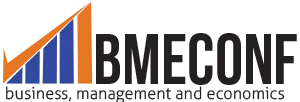Building Capacity for Digital Transformation: Strategic Priorities and Gaps in the Pharmaceutical Ecosystem
DOI:
https://doi.org/10.33422/bmeconf.v2i1.1027Keywords:
Ecosystem Theory, Capacity Building, Digital Transformation, Pharmaceutical Industry, Qualitative ResearchAbstract
This study explores how actors in ecosystems shaped by non-digital incumbents with legacy business models build the capacities required for digital transformation, using the pharmaceutical industry as a case in point. As the pharmaceutical business model is tightly interwoven and rooted in a pre-digital era, transformation efforts depend on the coordinated development of capacities that extend beyond their traditional core. While previous research has largely focused on individual organizations, it has often neglected the ecosystem perspective – which is particularly relevant for digital transformation, where a wide range of actors must coordinate across boundaries. To address this gap, we identify five capacity dimensions in the literature and contextualize how they are prioritized, interrelated, and shared across the ecosystem over time. Our findings reveal that although pharma is a well-established ecosystem with collaborative structures, digital transformation remains largely an actor-level effort: Technical and operational aspects are addressed early on but mostly lack cross-actor integration, regulatory and financial capacity follow selectively, and organizational capacity is addressed last, if at all. These patterns reflect the absence of structured collaboration at the ecosystem level, with partnerships often transactional and driven by short-term needs. The study contributes by identifying a boundary to ecosystem theory, showing that collaborative capacity building for digital transformation does not naturally emerge in historically non-digital environments. Practical implications include entry points for coordination and integration through internal roles, intermediary platforms, shared benchmarks, and holistic planning approaches.
Downloads
Published
Issue
Section
License
Copyright (c) 2025 Christina Rettig, Wim Vanhaverbeke

This work is licensed under a Creative Commons Attribution 4.0 International License.








